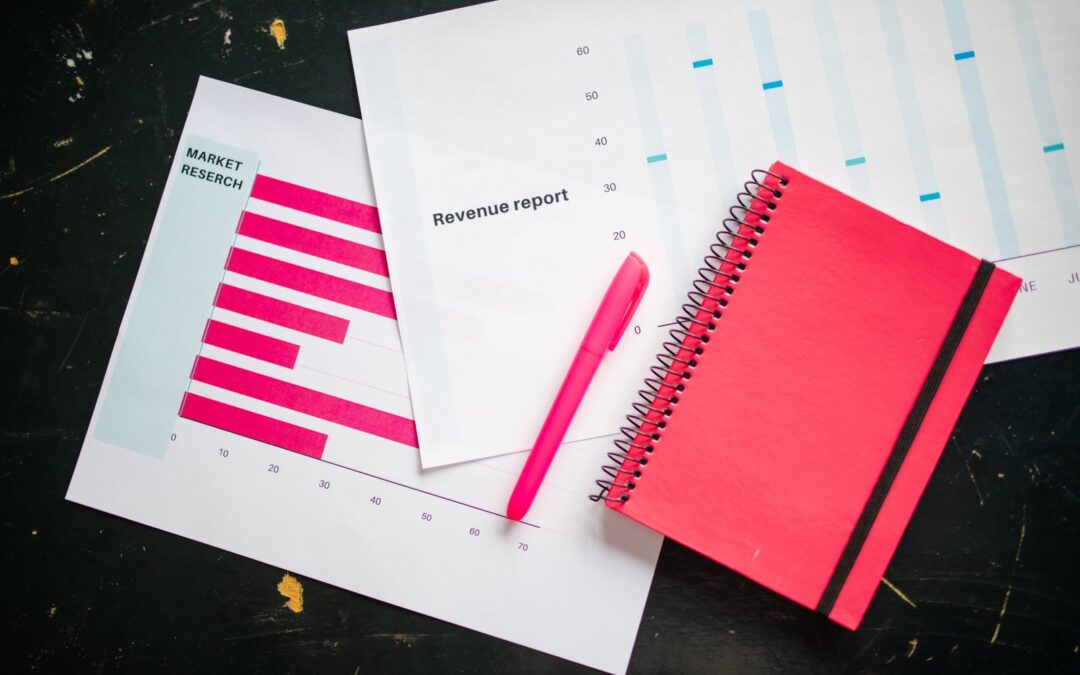
by threshold | Apr 16, 2024 | Digital Marketing, General, Marketing, Tech/Web

Ava Page
When it comes to the world of digital marketing, change is not just inevitable – it’s the norm. At Threshold, we understand the importance of staying ahead of the curve. That’s why we’re here to provide you with a deep dive into the upcoming changes to cookies, and how they’ll impact your business, your marketing, and your brand.
understanding cookies: pillars of personalized online experiences.
Cookies, those tiny digital crumbs, play a monumental role in shaping your online journey. But what exactly are cookies? Imagine them as digital footprints left behind as you navigate the vast landscape of the internet. They’re small pieces of data stored on your browser that help websites remember information about you.
This can range from remembering your login details to tailoring product recommendations based on your browsing history. In essence, cookies are the cornerstone of delivering seamless and customized experiences to customers, especially in the retail sector.
Google’s bold move: unraveling the implications.
Google’s recent announcement about phasing out third-party cookies on Chrome has sent ripples through the digital marketing community. But why is this such a seismic shift? Well, probably because Google is the last major browser that allows third-party cookies by default, representing a whopping 60% of browser use.
So, why is Google making this change? The answer lies in the growing concerns surrounding user privacy and data protection. Third-party cookies have long been criticized for their invasive nature, tracking users across the web without their explicit consent. By phasing out these cookies, Google aims to enhance user privacy and security, aligning with evolving regulatory standards and consumer expectations.
While this move may seem daunting, it’s important to note that we’re not venturing into a cookieless world just yet. Third-party cookies remain integral for website functionality, particularly in the retail sector where targeted advertising is paramount.
Despite Google’s incremental steps, such as the testing of deprecating a small percentage of cookies since January 2024, there’s lingering uncertainty surrounding the feasibility of meeting the July 2024 deadline. The introduction of Google’s Privacy Sandbox initiative, featuring alternative methods like the Topics API and Fenced Frames, has sparked both curiosity and concern within the industry. These initiatives aim to provide advertisers with viable alternatives to third-party cookies while preserving user privacy and fostering a more transparent digital ecosystem.
addressing concerns and crafting a strategy.
In light of these changes, concerns have emerged from industry stakeholders, including the International Advertising Bureau (IAB) and the UK Competition and Markets Authority (CMA). Questions regarding market dominance, fairness, and transparency loom large, prompting businesses to rethink their advertising strategies.
One significant challenge arising from the phasing out of third-party cookies is the potential gap in conversion tracking. Without the ability to track user behavior across websites using traditional cookie-based methods, businesses may face difficulties in accurately measuring the effectiveness of their marketing efforts and attributing conversions.
However, amidst these challenges lies an opportunity for growth and innovation. At Threshold, we’re committed to guiding you through this transition. Through proactive client education, meticulous risk assessment, and rigorous testing efforts, we’ll ensure you’re well-equipped to navigate the evolving digital landscape.
By fostering collaboration with our expert digital team and harnessing the power of first-party data strategies, we’ll help you adapt to the changing terrain while maintaining your competitive edge. Our approach includes leveraging alternative tracking methods, such as first-party cookies and server-side tracking, to close the gap in conversion tracking and provide valuable insights into your customers’ journey. With our tailored strategies and innovative solutions, you can continue to drive results and achieve your business objectives in a cookie-less world.
embracing opportunities.
As we bid farewell to third-party cookies, it’s time to explore new avenues for digital marketing. From real estate to financial institutions – and everywhere in between – we’re being presented with exciting opportunities, where strategies emphasizing brand awareness and contextual targeting are gaining momentum, offering a fresh perspective on consumer engagement.
While the road ahead may be uncertain, it’s also brimming with potential. By prioritizing consumer preferences, transparency, and resilience, we can transform challenges into opportunities for growth and innovation.
to sum things up.
Change is not just a challenge; it’s an invitation to evolve. Together, let’s embrace the cookie revolution and pave the way for a more consumer-centric and privacy-conscious digital future. At Threshold, we’re here to guide you every step of the way.
Ready to take this conversation further with a marketing expert? Reach out to our THeam today for all the answers you’re looking for.
before you go.
For more tips and information about marketing your everything, take a look at the rest of our blogs, right here on our website!
You can also subscribe to our email newsletter (it’s got some great stuff), and follow us on Instagram, Facebook, or LinkedIn!
about the author.
Ava is the SEO & Paid Media Specialist at Threshold.
In her role, she is responsible for the content creation and management of all Threshold and PromoShak social channels, blog content, and SEO maintenance, and aids in internal and client-facing digital marketing strategies.
When she’s not busy creating content, you can usually find her picking out new plants, island-hopping, watching Duke basketball, or spending time with her fur babies.

by threshold | Apr 4, 2024 | Creative, Design, Digital Marketing, General, Marketing, Tech/Web
PeakMade Real Estate came to us needing a platform that allowed for a more streamlined approach to websites across their portfolio and understood that the user journey is different across their various markets.
So we did what we do best, implementing website templates optimized for Peak’s audiences that have significantly reduced website development time and include a custom Entrata integration that converts better than any leading property management software on the market.
when we say best, we mean it.
We wanted to not only simplify website development but also provide PeakMade’s portfolio with a marketing tool that amplified lead generation. Each template design was to be innovative, with thoughtful movement of content to engage the viewer while not overwhelming them.
Our adaptable designs show an immediate improvement in conversion rates in the PeakMade portfolio, with lower costs to acquire leads when comparing the performance of their pay-per-click campaigns year-over-year from pre-templated Threshold websites to post.
Claremont Collegiate Apartments in Claremont, CA. saw:
- A 213% increase in conversion rate
- A 65% decrease in cost per conversion
University Gateway in Los Angeles, CA. saw:
- A 1,607% increase in conversion rate
- An 83% decrease in cost per conversion
Impressed? See more for yourself.
a custom integration? you got it.
Up until now, Entrata’s API allowed only floor plan pricing to be pulled into websites. Threshold built a custom integration for Entrata that retrieves several data points such as property floor plan details, availability, pricing, specials, and general property promotions, leveraging automation and increasing website accuracy and sustainability.
Our custom PeakMade templated designs and integration go far beyond the current property website capabilities, allowing property managers to:
- Set a custom pricing label option for floor plans with the ability to customize individual floor plan specials and floor plan name options
- Introduce a rent pricing override option for quick and easy discounted pricing updates when needed
- Create specials and offers that automatically remove themselves from the website when they expire
What does this mean for the property management teams?
- Information refreshes automatically
- No more spending precious hours updating leasing information or submitting requests through Threshold
- User-friendly back-end access to make certain edits on their own, without having to wait the standard 24-72 hour agency request turnaround time
- Focus on leasing and know that the property’s website is accurate and up-to-date
we love results.
How fast do you need a website? Because Threshold and PeakMade launched several of these custom website templates in only 26 business days. But the results don’t stop there.
When switching their property websites from Entrata templated designs to Threshold’s customized solution, PeakMade saw some dramatic improvements.
Taking a sample of 10 property websites from 2022-2023, the PeakMade team saw the following changes:
- Average time on a website increased by 33 seconds across all sites
- An engagement rate increase of 7.74%
- A goal conversion rate increase of 77.61%
before you go.
The 411? Using the Entrata designs and limited plugins was costing PeakMade properties conversions. Their new Threshold website templates look better than the previous property websites and provide a much-improved user experience that’s consistently resulting in better website engagement and higher lease numbers.
Let’s propel you forward. Your place for your every marketing need, with us you can go a la carte or take all the carts. Talk to a Marketing Specialist today.

by threshold | Mar 4, 2024 | Digital Marketing, General, Marketing, Tech/Web
 Ava Page
Ava Page
Step into the world of digital marketing mastery with Threshold! Dive into the true impact of SEO in today’s blog.
We’ll unravel the secrets behind keywords, their vital role in your online journey, and how our expertise can elevate your brand visibility.
keywords: your brand’s secret weapon.
In the vast online landscape, keywords act as breadcrumbs guiding potential customers to your virtual doorstep. At Threshold, we infuse a playful twist into these strategic elements, navigating through the search engine maze effortlessly.
Picture your brand soaring to the top of search results, leaving competitors in the digital dust – that’s the SEO magic we specialize in.
turning clicks into conversions.
SEO isn’t just about securing top rankings; it’s about orchestrating a symphony that converts clicks into loyal customers. Our strategies ensure that your audience not only discovers you but stays engaged and invested in what they find.
With our team of SEO experts, your online presence becomes a melodious masterpiece, resonating with your target audience.
playing the algorithm game.
In the dynamic realm of search engine algorithms, staying ahead demands finesse and strategy.
At Threshold, we engage in a strategic dance with the algorithms, ensuring your website remains at the forefront of rankings. From content optimization to mobile responsiveness, our approach is tailored to dazzle both users and search engines alike.
metrics speak louder than words.
Data-driven decisions shape the path to online success. With Threshold, witness the transformation of your website’s analytics.
Our meticulous tracking and analysis ensure every move is calculated and every improvement celebrated. It’s not just about visibility; it’s about making waves in the digital ocean.
packages and services.
We offer comprehensive SEO packages tailored to your unique needs.
From keyword research and content optimization to technical SEO audits and ongoing monitoring, our services cover every aspect of your digital journey. Additionally, explore our add-ons for enhanced visibility and conversion optimization.
to sum things up.
Unlock the full potential of your brand with Threshold Agency’s SEO expertise. Explore our digital marketing services and let the magic of SEO elevate your online presence. Remember, in the digital world, visibility is power, and with Threshold by your side, your brand will shine brighter than ever before.
Let’s make your online journey a success, together.
before you go.
For more tips and information about marketing your everything, take a look at the rest of our blogs, right here on our website!
You can also subscribe to our email newsletter (it’s got some great stuff), and follow us on Instagram, Facebook, or LinkedIn!
about the author.
Ava is the SEO & Paid Media Specialist at Threshold.
In her role, she is responsible for the content creation and management of all Threshold and PromoShak social channels, blog content, and SEO maintenance, and aids in internal and client-facing digital marketing strategies.
When she’s not busy creating content, you can usually find her picking out new plants, island-hopping, watching Duke basketball, or spending time with her fur babies.

by threshold | Feb 24, 2024 | Creative, Design, Digital Marketing, General, Marketing, Tech/Web, Thought Leadership
With millions of websites competing for attention in today’s digital age, ensuring that your site stands out from the crowd is essential. Here are our top tips to help you achieve a memorable and engaging website design that will attract and retain visitors.
know who you are.
The importance of having a strong brand identity can’t be overstated. Before diving into the web design process, it’s essential to have a clear understanding of your brand’s visual identity and voice. Your website should reflect your brand’s personality and values while speaking to your target audience, whether it’s students, professionals, or families.
Use consistent design elements such as colors, typography, and graphics throughout your site to create a cohesive visitor experience.
design is psychology. use it to your advantage.
Our brains are wired to process information in specific ways, and design can leverage these cognitive tendencies. Visual hierarchy is a powerful tool that can guide users’ attention to the important parts of your website through the use of headlines, images, and eye-catching CTAs. A good design can influence what a user sees first and how they interact with your site.
Emotions are heavy hitters when it comes to people’s decision-making processes. Evoking the right emotions through a design—whether it’s a sense of trust, excitement, or nostalgia—can help foster a stronger connection between the user and the brand.
Another psychological tool you can use to elevate your website is something called the principle of social proof. For better or for worse, we live in an age of social influence and people are more likely to take action if they see others doing the same. Incorporating testimonials, reviews, and user-generated content can help build trust and credibility with visitors, encouraging them to engage further with your website.
dare to be different.
While it’s essential to adhere to design principles and best practices, don’t be afraid to break the mold and experiment with unconventional elements in your website design.
For example, the internet is made up of boxes—people are used to seeing grid-like layouts. Consider shaking things up by using an asymmetrical layout to create visual interest. Experiment with big, bold typography choices, vibrant color schemes, or whimsical illustrations to infuse personality into your website. Introducing unexpected elements can surprise and delight visitors, making your website more memorable.
By daring to be different and embracing unconventional elements in your website design, you can set your site apart from the competition and create a unique online experience for visitors. Remember to stay true to your brand identity and objectives while pushing the boundaries of what’s been done before.
don’t forget about user experience (ux)!
When considering these things, it’s crucial to strike a balance between creativity and usability. Ensure that unconventional elements enhance rather than detract from the overall user experience. Nobody likes a site that’s hard to navigate! Conduct user testing to gather feedback and make adjustments as needed to ensure that your design choices resonate with your target audience.
final thoughts.
By following these tips and implementing thoughtful design strategies, you can make your website stand out from the crowd and leave a lasting impression on visitors. Remember to continuously monitor and optimize your website’s performance to ensure that it remains relevant and engaging in the ever-evolving digital landscape.
We recognize the uniqueness of each brand and the importance of individual visions. By seamlessly integrating client ideas with our technical expertise, we produce websites that not only meet but exceed the expectations of the target audience.
Whether you’re a startup looking for a bold online debut or an established business in need of a digital facelift, Threshold is ready to cater to your specific needs. Our bespoke solutions take into account your brand identity, target audience, and business objectives, ensuring that the end result is more than just a website – it’s a strategic tool for growth and engagement.
In the dynamic world of web development, Threshold remains your trustworthy ally, navigating complexities with finesse. Entrust us with your digital aspirations, and witness as we transform your vision into a tangible reality, connecting you with your audience in meaningful ways. Allow us to be the catalyst to elevate your brand, captivate your audience, and explore the limitless possibilities of web development together.
about the author.
When we think about someone who can literally do it all, Heather is always the first one to come to mind. From designing and developing stunning websites that always out-perform, to understanding branding in a way that would put even the most experienced professionals to shame, Heather is our go-to girl in all things creative.

by threshold | Feb 15, 2024 | Creative, Design, Digital Marketing, Financial Marketing, General, Marketing, Tech/Web
 Ava Page
Ava Page
In a digital era dominated by data, marketing success hinges on the ability to harness insights strategically. From creative endeavors to website development, digital strategies, financial institutions, and promotional products, Threshold leverages data to drive unparalleled success.
Let’s take a look into how our commitment to data-driven marketing sets us apart in each of these crucial areas in today’s saturated marketing landscape.
creative excellence.
Our creative mastery stands as a testament to the power of data in shaping compelling narratives. By analyzing audience preferences and market trends, our creative team crafts visually appealing and emotionally resonant campaigns that perform – like the fact that Threshold websites hold a 40% or below bounce rate for organic traffic.
The result? Creative endeavors that not only captivate, but convert.
web dev mastery.
Websites are the digital storefronts of today, and our data-driven approach to web development ensures that each site is tailored to the target audience.
On average, Threshold websites perform better than competitors:
- 85% or higher health score on 100% of our websites
- Organic users spend 2+ minutes on websites
- visiting multiple pages & CTAs
From user experience to performance optimization, data insights guide the creation of websites that not only look stunning but also function seamlessly, contributing to a positive brand image.
digital strategies redefined.
In the digital realm, success lies in precision and relevance. Threshold’s digital vertical relies on data analytics to optimize campaigns across platforms.
From social media to search engine marketing, data-driven insights guide strategic decisions, ensuring maximum impact and ROI for clients navigating the competitive digital landscape.
A recent campaign for Willow Bridge showed our ads out-performing our competitors – by a long shot. See the numbers for yourself:
- 62% engagement rate (15% higher than industry avg.)
- Users spent 2x longer on site
- 18% CTR (over 2x higher than industry avg.)
tailored solutions for financial institutions.
The financial sector demands a nuanced approach, and we excel in providing tailored solutions driven by data.
Understanding the unique challenges and opportunities within financial institutions, from ranging customer bases and demographics to maintaining compliance standards, our team leverages data to craft marketing strategies that resonate with the target audience, fostering trust and brand loyalty.
promotional prowess.
In the world of promotional marketing, data is the key to creating impactful campaigns. Threshold’s promotional vertical utilizes data insights to identify trends, preferences, and effective channels for promotional initiatives.
From branded merchandise to interactive giveaways, each promotional campaign is strategically designed to leave a lasting impression.
to sum things up.
Our vision: to make everyone rethink what they expect from marketing.
By harnessing insights for creative campaigns, website development, digital strategies, financial institutions, and promotional initiatives, we’re setting a new standard for success in our field.
In a landscape where data is king, choose Threshold for an elevated marketing experience that goes beyond the ordinary, turning insights into tangible results. Elevate your brand with Threshold, where data meets creativity to unlock unprecedented success.
before you go.
For more tips and information about marketing your everything, take a look at the rest of our blogs, right here on our website!
You can also subscribe to our email newsletter (it’s got some great stuff), and follow us on Instagram, Facebook, or LinkedIn!
about the author.
Ava is the SEO & Paid Media Specialist at Threshold.
In her role, she is responsible for the content creation and management of all Threshold and PromoShak social channels, blog content, and SEO maintenance, and aids in internal and client-facing digital marketing strategies.
When she’s not busy creating content, you can usually find her picking out new plants, island-hopping, watching Duke basketball, or spending time with her fur babies.

by threshold | Jan 19, 2024 | Digital Marketing, General, Marketing, Tech/Web, Thought Leadership
 Ava Page
Ava Page
As we set sail into the ever-evolving realm of digital marketing, staying attuned to the latest social media trends is paramount. At Threshold Agency, we’re your compass in the vast sea of possibilities, guiding you through the social media landscape that is set to define marketing in 2024 with a blend of professionalism and a light touch.
video continues to reign.
In the age of short attention spans, video content remains king. Threshold Agency leverages this trend, crafting engaging video narratives that captivate your audience and elevate your brand’s storytelling.
interactive content takes center stage.
The era of passive scrolling is evolving into interactive engagement. From polls and quizzes to immersive experiences, Threshold Agency taps into the allure of interactive content, creating meaningful connections with your audience.
authenticity Is non-negotiable.
In a world saturated with content, authenticity emerges as the true currency. Threshold Agency fosters genuine connections by humanizing your brand, emphasizing real stories, and creating a relatable online presence that resonates with your audience.
rise of social commerce.
Shopping is becoming more social than ever. Threshold Agency navigates the social commerce landscape, integrating seamless shopping experiences into social platforms to convert engagement into sales and elevate your brand’s online retail presence.
sustainability as a core value.
As environmental awareness grows, so does the importance of sustainable practices. Threshold Agency aligns your brand with eco-conscious values, integrating sustainability into your social media presence to connect with the socially responsible consumer of 2024.
AI-driven personalization.
Tailoring content to individual preferences is the future of social media marketing. Threshold Agency harnesses the power of AI to deliver personalized experiences, ensuring your brand speaks directly to the unique interests and needs of your audience.
community building beyond platforms.
Beyond likes and shares, the focus is shifting to community building. Threshold Agency fosters vibrant brand communities, creating spaces where your audience can engage, share experiences, and become advocates for your brand.
to sum things up.
As the tides of social media trends shape the marketing landscape in 2024, Threshold Agency stands at the helm, ready to navigate and capitalize on these shifts. Our commitment is to infuse your brand with the perfect blend of professionalism and a light touch, ensuring you ride the waves of innovation with confidence and success.
Step into the future of marketing with Threshold as your trusted guide.
before you go.
For more tips and information about marketing your everything, take a look at the rest of our blogs, right here on our website!
You can also subscribe to our email newsletter (it’s got some great stuff), and follow us on Instagram, Facebook, or LinkedIn!
about the author.
Ava is the SEO & Paid Media Specialist at Threshold.
In her role, she is responsible for the content creation and management of all Threshold and PromoShak social channels, blog content, and SEO maintenance, and aids in digital marketing strategies both internal and client-facing.
When she’s not busy creating content, you can usually find her picking out new plants, island-hopping, watching Duke basketball, or spending time with her fur babies.





 Ava Page
Ava Page


